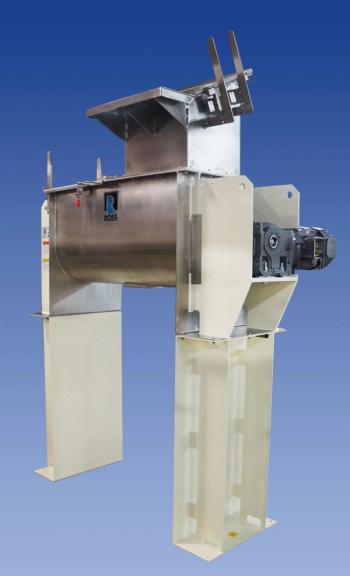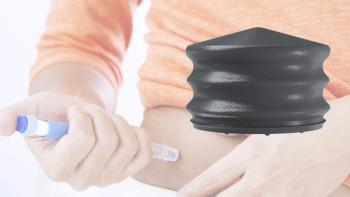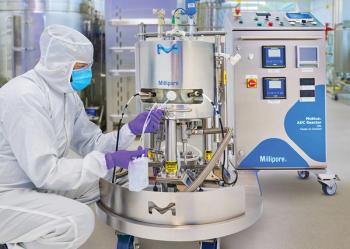
- Pharmaceutical Technology-05-02-2011
- Volume 35
- Issue 5
An Indispensible Book on Disposables
Students and professionals can learn a good deal from a review of single-use technology.
The increasing demand on drug manufacturers to produce efficiently, reduce drug costs, and reduce time to market are several key reasons for the implementation of single-use systems. Single-Use Technology in Biopharmaceutical Manufacturing provides the reader with background information about this technology, and also describes advances in single-use products. The book helps guide the reader through the complex decision making process required for implementing disposable components.
Single-Use Technology in Biopharmaceutical Manufacture, Regine Eibl and Dieter Eibl, Eds., Wiley, Hoboken, NJ, 2011, 369 pp., ISBN: 9780470433515
The book's editors, Regine and Dieter Eibl, assembled an exceptionally diverse group of academic and industry experts to describe this increasingly popular technology. The text presents a solid technical and practical review of current single-use products and their applications in biopharmaceutical manufacturing. The preface defines the book's audience as individuals in advanced graduate studies in biopharmaceuticals, experienced end-users developing single-use systems, and professionals exploring disposable options in new or established process systems.
The book is divided into two major sections. The first section is devoted to current single-use products and offers expansive descriptions of technologies, including mixing and storage containers, complex bioreactor systems, and all the connecting disposable devices between. The second section delves into the components' practical applications using a case-study approach. Several of this section's chapters focus on comparable multiuse (i.e., stainless steel) systems and their associated costs.
The chapters are well written and, for the most part, easily readable for technical scientists and staff who do not have an engineering background. Although the discussion of each topic is brief, the authors present a reasonable amount of detail, thus giving the reader a comprehensive overview of each single-use technology or application. Each chapter provides a wealth of references for the reader interested in deep research into these topics.
The book's first section contains well-rounded discussions of disposable components, such as bags, sensors, filtration and separation devices, downstream processing equipment, connectors, fittings, tubing, and bioreactors. Each chapter details the core technology and describes the advantages and drawbacks one must consider in implementing single-use products.
The section's contributors are subject-matter experts who explain each product's scope. The authors also list various device manufacturers for each item and provide basic comparison tables to assist the reader in making informed choices. These tools should help the reader sort through the myriad of products to select and specify the appropriate system design for his or her application (e.g., upstream or downstream processing).
The final chapters of the first section discuss the ways in which disposable components affect facility design, validation, and qualification, as well as waste management and a plant's environmental footprint. These subjects are complex, and the chapters give only a brief overview of each one. Still, the text provides a good starting point for end-users who need to understand the resources and requirements to implement single-use devices. The text also discusses future developments in single-use components and draws broad conclusions about how they might transform current biomanufacturing processes.
Of particular significance is the chapter titled "Validation and Qualification of Disposables Used in Biomanufacture." As an introductory guide through the confusing, and at times conflicting, regulatory requirements and industry standards, this chapter is immensely helpful. From cGMPs to international harmonization and standardization, the chapter provides an overview of regulations and standards. The validation and qualification section, although brief, gives the reader the essentials. A detailed discussion of extractables and leachables, coupled with passages about cleaning and sterilization, completes this chapter.
The case-study approach in the book's second section offers detail about specific bioprocessing applications. By examining the manufacture of monoclonal antibodies and active pharmaceutical ingredients, the text helps the reader understand the process-development challenges (e.g., changing from research to process scale) to implementing single-use systems. Each chapter focuses on the core technologies of mixing, bioreactors, automation and software, sensors, membrane-adsorber chromatography, and viral-clearance downstream processing.
The section's final chapters reveal what "going fully disposable" means through a case study that uses examples from upstream and downstream processing. Charts and comparison tables of the various process steps detail the production costs of single- and multiuse biomanufacturing equipment. These chapters also offer an excellent review of a process model and design criteria with associated scaling and cost comparisons of single-use and multiuse systems.
The book's organization is logical as it progresses from single-use technology basics to the complex issues of scale-up, biosystems design, applications, and challenges to implementation. Once published, every book or paper about technology can be outdated by scientific development and innovation. However, having attended INTERPHEX 2011 and viewed the many suppliers and manufacturers manufacturers displaying their latest single-use products, the current reviewer can say without reservation that this book is current and provides comment about future developments throughout. Single-Use Technology in Biopharmaceutical Manufacturing is a must read for those considering or already using disposable products and processes in biopharmaceutical manufacturing.
A. Mark Trotter is president of Trotter Biotech Solutions, 17 Agnes Ct., Melville, NY 11747, tel. 516.375.7990
Articles in this issue
over 14 years ago
Pharmaceutical Technology, May 2011 Issue (PDF)over 14 years ago
Report from Hungaryover 14 years ago
INTERPHEX Innovationsover 14 years ago
Supply Chain Painover 14 years ago
In the Spotlight May 2011over 14 years ago
Up Close and Personalover 14 years ago
Gelatin Capsule Shell Cross-Linkingover 14 years ago
Q&A with Greg Irace,sanofi-aventisover 14 years ago
Pharmaceutical Excipients for Hot-Melt Extrusionover 14 years ago
Global Healthcare on the Ground: Roche Takes on Illnesses in LDCsNewsletter
Get the essential updates shaping the future of pharma manufacturing and compliance—subscribe today to Pharmaceutical Technology and never miss a breakthrough.




